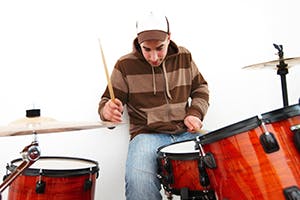Hearing loss is one of the most common medical conditions in the United States. But the stigma associated with hearing loss – elderly or those who work in loud environments – does not accurately represent that gambit of people struggling to hear. Worse still is those who suspect they have hearing loss wait an average of 7 years before getting tested.
Hearing Loss In Children
Three of every 1,000 babies have detectable hearing loss, but causes vary. Some children are born with hearing loss because they inherited it from their parents. An infection in the womb or after birth can damage auditory structures.
Other possible causes of hearing loss in children include:
- Birth defects in the ear canal
- Low birth weight
- Injured or ruptured eardrums
- Objects stuck in the ear canal
The two types of hearing loss are:
Central: A problem with the brain’s ability to process audio information. Also known as hidden hearing loss, this condition means the auditory nerve receptors function, but the brain’s synapses are not interpreting audio signals.
Peripheral: a physical defect with the ear’s structure
Teenagers And Young Adults
More and more millennials – people born between 1981 and 1996 – are showing signs of hearing loss. The phenomenon is partially attributed to noise-induced hearing loss (NIHL) caused by exposure to sounds over 85 decibels.
Noise-damaging exposure can include:
- Power tools and equipment
- Gunfire
- Heavy machinery
- Snowmobiles
- Lawnmowers
- Loud music
About 50% of millennials in the United States risk hearing loss due to exposure to dangerous volumes through earbuds. One in 8 individuals ages 6 through 19 already have hearing loss caused by loud music.
65 And Older
People naturally lose their ability to hear as they age. Individuals over 50 gradually lose more of their hearing each year. Age-related hearing loss is compounded by previous noise-induced damage, head injury, and ototoxic medications, which are toxic to the ear.
Like children and young adults, older generations are susceptible to conductive and sensorineural hearing loss. Conductive hearing loss can include infections, blockages, earwax buildup, or tumors. Sensorineural hearing loss occurs when the ear’s hair cells are damaged from loud noise or trauma.
If you suspect hearing loss, visit Hearing Associates. We provide testing to determine your degree of hearing loss and services to support you. Call 888.760.2032 or contact us online for more information.


